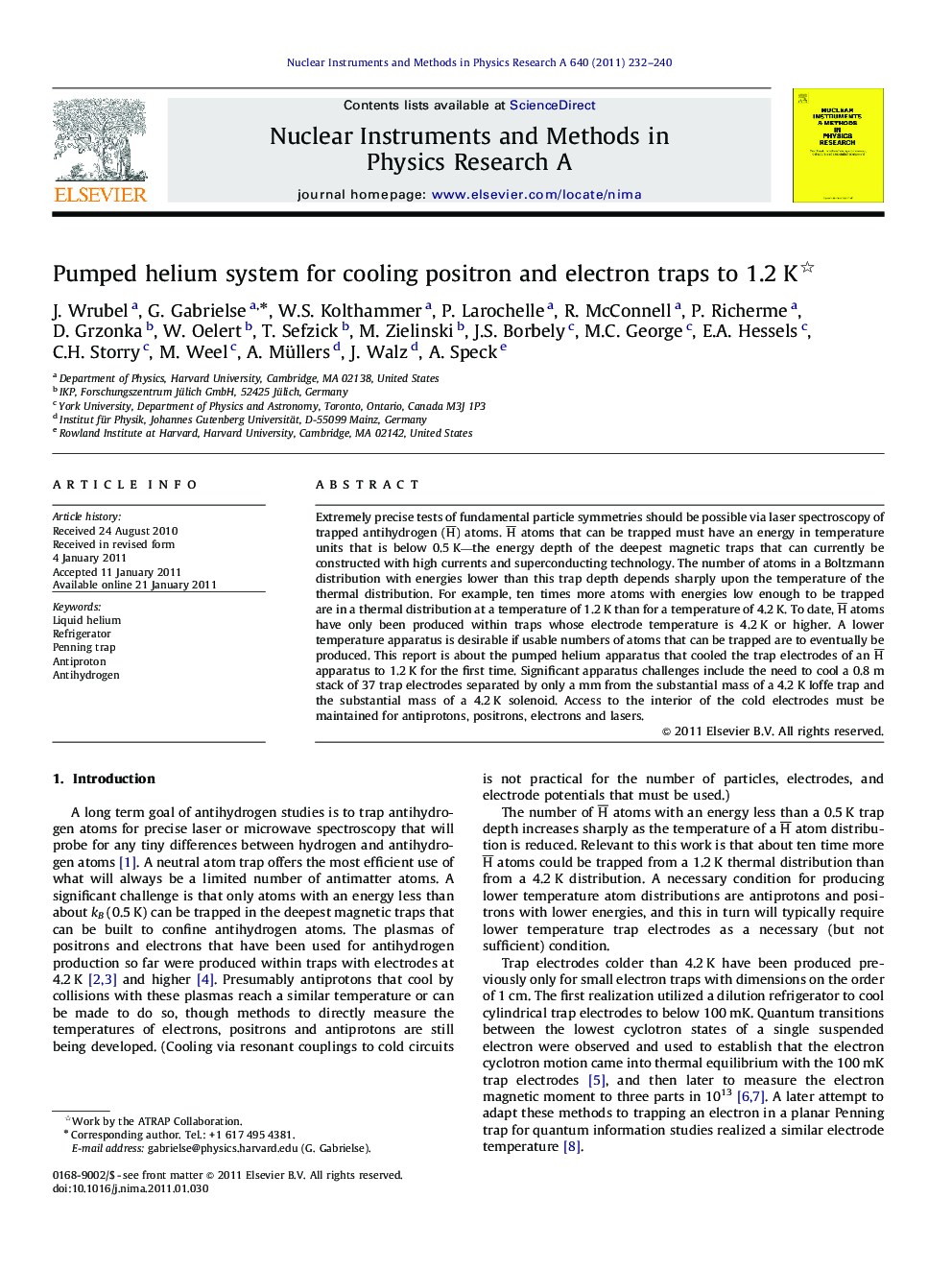| Article ID | Journal | Published Year | Pages | File Type |
|---|---|---|---|---|
| 1825133 | Nuclear Instruments and Methods in Physics Research Section A: Accelerators, Spectrometers, Detectors and Associated Equipment | 2011 | 9 Pages |
Extremely precise tests of fundamental particle symmetries should be possible via laser spectroscopy of trapped antihydrogen (H¯) atoms. H¯ atoms that can be trapped must have an energy in temperature units that is below 0.5 K—the energy depth of the deepest magnetic traps that can currently be constructed with high currents and superconducting technology. The number of atoms in a Boltzmann distribution with energies lower than this trap depth depends sharply upon the temperature of the thermal distribution. For example, ten times more atoms with energies low enough to be trapped are in a thermal distribution at a temperature of 1.2 K than for a temperature of 4.2 K. To date, H¯ atoms have only been produced within traps whose electrode temperature is 4.2 K or higher. A lower temperature apparatus is desirable if usable numbers of atoms that can be trapped are to eventually be produced. This report is about the pumped helium apparatus that cooled the trap electrodes of an H¯ apparatus to 1.2 K for the first time. Significant apparatus challenges include the need to cool a 0.8 m stack of 37 trap electrodes separated by only a mm from the substantial mass of a 4.2 K Ioffe trap and the substantial mass of a 4.2 K solenoid. Access to the interior of the cold electrodes must be maintained for antiprotons, positrons, electrons and lasers.
